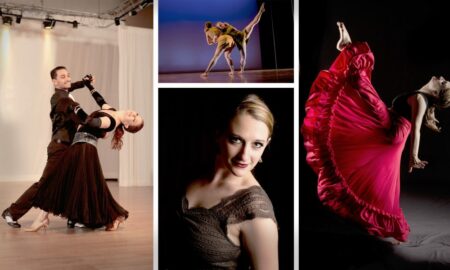

Today we’d like to introduce you to Dashka-Rheyna Charlemagne.
Hi Dashka-Rheyna, please kick things off for us with an introduction to yourself and your story.
I started painting purely by chance in 2016, when my school principal sent me to an inter-school painting competition. I knew nothing about painting at the time. I’d only drawn. After coming 5th in the competition with my work, I decided to take a more serious interest in painting. I’m completely self-taught and I’ve tried lots of things, like vegetable paint. In 2019, I started studying Art History at university, which gave me another window on art. In the meantime, that same year I joined the Festigraffiti « street art au Féminin » team. That’s how I got into graffiti. Today, I work alone as a painter and street artist, but as a young woman I’ve gained a lot of experience in these fields. Alongside all this, I’m a writer, and it’s the only art form in which I’ve never had to struggle to find my place. When I was very young, I won a national writing prize. Today I’m in the process of linking my pen to my paintbrush. I’ve already tried to do this, notably in 2023 when I proposed a series of 5 works linking painting and writing for the Centre D’art exhibition, and I’m still doing it. As for graffiti, my very graphic style makes it easy for me to stand out, and I like that. I’m also a feminist so a lot of my work talk about women’s right specially the street art where I used to go live with dresses et heels to show how invisible women are in this field in Haiti.
Can you talk to us a bit about the challenges and lessons you’ve learned along the way. Looking back would you say it’s been easy or smooth in retrospect?
Each stage had its own degree of complication. As I said, I didn’t have a problem with writing, I grew up with it. But painting and graffiti are more complicated, because in Haiti it’s very difficult to be a painter and have your art validated. I know this because I study art history and I see the paradigm that exists between the number of artists who exist and those who are consecrated as “Haitian artists”. As a self-taught painter, I had no help when I started out. I was just a young girl who liked to paint. I seized exhibition opportunities when they arose, and I used my social medias a lot. In 2023, I met a painter who is now a very good friend of mine, Hervé Sabin, who, after seeing my work, invited me to come and work in his studio as part of an artistic residency. It was there that I began to structure my art. In the same year, I was able to exhibit with the Centre d’art and gain recognition as a Haitian artist. As for graffiti, it’s much the same pattern, with the difference that I’m constantly evolving on my own, but my drastically contrasting style makes it impossible not to notice me, despite the critics.
Thanks – so what else should our readers know about your work and what you’re currently focused on?
I’m a feminist activist, artist. My work focuses on women and their place in society, as well as on a much more intrapersonal aspect, namely internal feelings and sentiments. I’m much better known for my live graffiti in dresses and high heels and my cross-over style between writing, painting and graffiti. I’m most proud of my murals, which bring a breath of fresh air to street art in Haiti.
Contact Info:






Image Credits
For the first picture: Dvo













